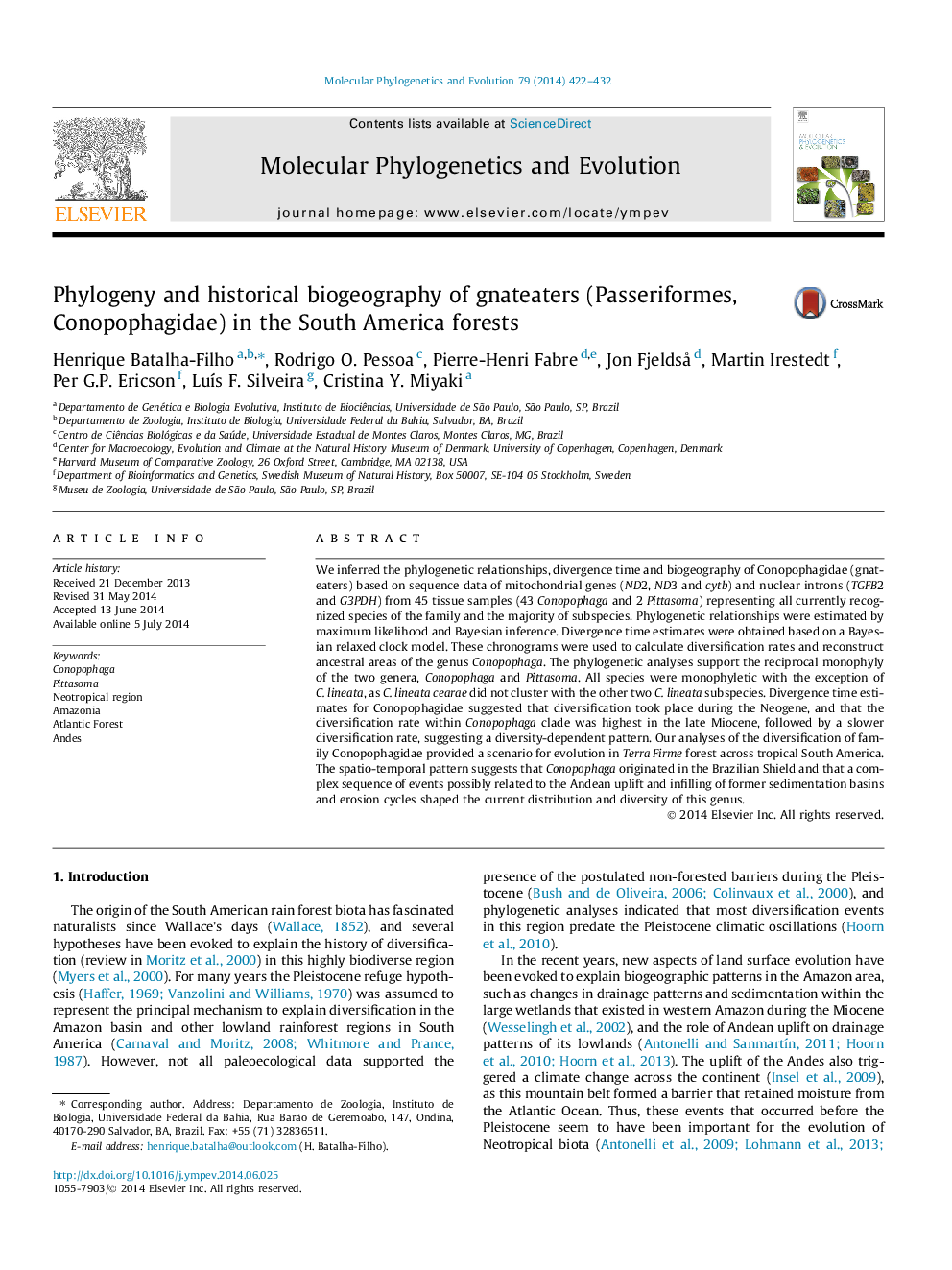| Article ID | Journal | Published Year | Pages | File Type |
|---|---|---|---|---|
| 5919250 | Molecular Phylogenetics and Evolution | 2014 | 11 Pages |
â¢We infer phylogenetic relationships, divergence time and biogeography of Conopophagidae (gnateaters).â¢The analyses support the monophyly of two genera Conopophaga and Pittasoma.â¢The spatio-temporal pattern suggests that Conopophaga originated in Brazilian Shield.â¢Andean uplift and infilling of former sedimentation basins probably shaped the diversification of that group.
We inferred the phylogenetic relationships, divergence time and biogeography of Conopophagidae (gnateaters) based on sequence data of mitochondrial genes (ND2, ND3 and cytb) and nuclear introns (TGFB2 and G3PDH) from 45 tissue samples (43 Conopophaga and 2 Pittasoma) representing all currently recognized species of the family and the majority of subspecies. Phylogenetic relationships were estimated by maximum likelihood and Bayesian inference. Divergence time estimates were obtained based on a Bayesian relaxed clock model. These chronograms were used to calculate diversification rates and reconstruct ancestral areas of the genus Conopophaga. The phylogenetic analyses support the reciprocal monophyly of the two genera, Conopophaga and Pittasoma. All species were monophyletic with the exception of C. lineata, as C. lineata cearae did not cluster with the other two C. lineata subspecies. Divergence time estimates for Conopophagidae suggested that diversification took place during the Neogene, and that the diversification rate within Conopophaga clade was highest in the late Miocene, followed by a slower diversification rate, suggesting a diversity-dependent pattern. Our analyses of the diversification of family Conopophagidae provided a scenario for evolution in Terra Firme forest across tropical South America. The spatio-temporal pattern suggests that Conopophaga originated in the Brazilian Shield and that a complex sequence of events possibly related to the Andean uplift and infilling of former sedimentation basins and erosion cycles shaped the current distribution and diversity of this genus.
Graphical abstractDownload high-res image (194KB)Download full-size image
